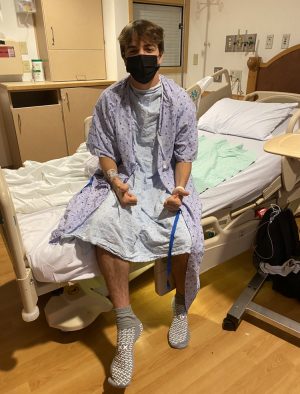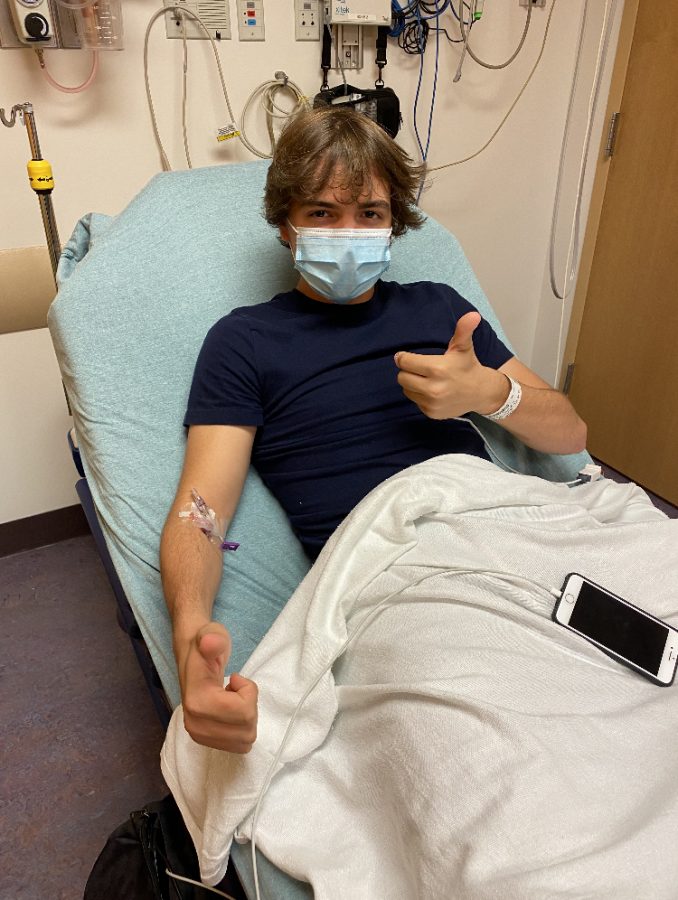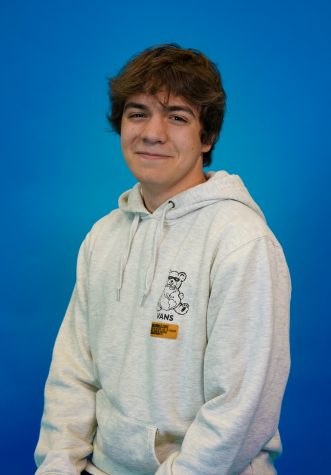At Last a Diagnosis
After months of questions and what felt like countless visits to the hospital, I have an answer.
November 22, 2021
As I walked out onto the soccer field, I was filled with excitement and pregame jitters. It was the first game of my senior season, and I was positioned at the point of our diamond — center midfield. The ref blew the whistle and the game began. It was a cool evening and the sun was still high above the sky, the perfect time for a soccer game.
As I was sprinting from the opposing team’s goal back to ours, I felt a pain in my chest. I shrugged it off and kept playing, trying to make it to halftime before saying anything. Once I came off of the field for a quick break, I almost collapsed, lowering myself to the ground with my hands on my head. It felt like I was spinning and about to pass out, but I wanted to continue to play.
My coaches and teammates expressed concern, but I brushed it off, saying I was simply tired. I returned for the second half and continued to have increased pains in my chest and started to lose feeling in my limbs.
Little did I know at the time, this event would drastically change the following months of my life.
The following day my pediatrician recommended immediate blood work. I soon met with a cardiologist, although I was still having intense chest pain and dizziness, I was cleared to return to soccer the following week.
But in my second game of the season, my chest tightened and my limbs grew numb again. Whenever I looked up, I felt as if I was spinning. When I began slurring my words, my teammates helped me off the field.
The following day my mom and I went back to the hospital in hopes of getting diagnosed and starting treatment. The doctors recommended an ultrasound sound of my chest, the results of which suggested that I had pinched arteries leading to my heart. The realization scared me, but I was relieved at least to have found the source of my problems. We scheduled a follow-up appointment, and in the meantime I was to take it easy.
Yet, only two days later, I was taken to the emergency room. My legs had lost the ability to feel, and it was a challenge to walk. The nurses placed 16 electrode pads on my chest to monitor my heart rate, and before too long, I regained partial feeling in my legs and was stable enough to leave the emergency room. We had tests scheduled for the following week to hopefully come to a conclusion and get a diagnosis.
On October 4th, I returned to Children’s Hospital, this time for a CT scan. We received the results the following day and found a thickening of blood coating my lungs. On October 7th, we discussed the results of the various tests in hopes of getting a diagnosis but still had no luck.

The next day, I was back in the emergency room by early morning. That night around 3:00am I awoke and realized I was unable to feel anything or move my legs. I was spinning and had the same chest pain as previously. In the morning, we headed back to Children’s Hospital. That night, I had a brain and spine MRI, and the following day the neurologists informed us that I had no clear signs of anything severe and that I should be able to leave.
At this point my mom and I felt defeated. I was missing out on school, soccer, and other activities, while feeling worse each day.
It was decided that until I had a clear diagnosis and was almost back to myself, I would have to participate in online school. I started physical therapy several times a week to strengthen my legs but had to stop until we had the results of a Holter monitor and EKG exercise test. In those weeks I had more blood tests, but yet still no answer.
60 days later, on November 11th, I was finally diagnosed: Dysautonomia. I felt relieved yet scared now that I knew it was really real. Along with Dysautonomia, I was also found to have a severe deficiency of Vitamin D and severe deficiency and loss of Magnesium. After two months of no answers, a sigh of relief came from my family and me as we can move forward with treatment and medication.













Tracey Cook • Dec 5, 2021 at 12:35 pm
Glad you received a diagnosis so you can move forward with your senior year and beyond!